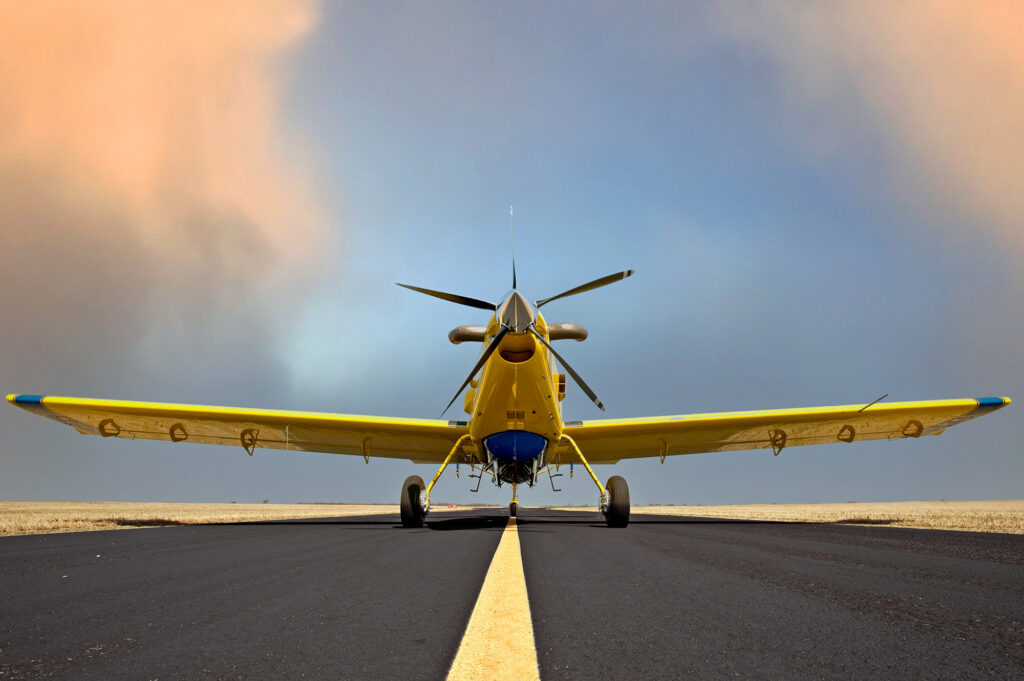Aircraft Overview
The Air Tractor® AT-802F combines agility, performance, reliability, and pinpoint accuracy that allows it to operate where other aircraft can’t.
The AT-802F is purpose-built for battling fires large and small—not only as an initial attack firefighter but also for extended attack duties and support of ground crews. It gets you there fast when rapid response times are crucial.

Swift transit times coupled with the flexibility to operate from remote airstrips, dirt roads, or small airports allow the AT-802F to impact a fire quicker and more efficiently. A powerful Pratt & Whitney PT6A-67AG turbine engine allows the AT-802F to ferry between the fire and the airfield at speeds approaching 175 knots (200 mph).
Once over the fire line, the AT-802F slows things down – dropping its payload low, slow, and right where it’s needed to knock down brush and grass fires or suppress fires in heavier canopies. The AT-802F’s maneuvering agility, speedy climb rates, and compact size make it ideal for mountainous terrain, narrow flight corridors, and wildland-urban interface areas.
Drop the load precisely where it’s needed, in exactly the amount needed. Air Tractor’s Gen III Fire Response Dispersal System (FRDS) offers a level of consistency, coverage and efficiency that other fire gate designs simply can’t provide – and it’s only available on the Air Tractor 802F.
Low operating cost, fuel efficiency, and extended operating range also make the AT-802F an ideal air asset for patrol duty – and immediate response – on days when wildfire risk is high. And when fire season is over, the AT-802F is ready to go back to work – not back into the hangar. The same qualities that make the AT-802F a superior aerial firefighter also make it ideally suited for forest restoration in the wake of wildfires. Its 800-gallon capacity, speed, and maneuverability make for effective hydromulch or reseeding applications for erosion control.
Dollar for dollar, pound for pound, the AT-802F is simply the most efficient, effective air tanker flying.